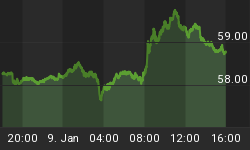The European Central Bank (ECB) has finally presented a possible solution to the European debt crisis. Will the Fed inject fresh liquidity into the system as well? The EUR/USD meets a good resistance at 1.28/1.29. The next target could be 1.30/1.32 and eventually 1.44.
The ECB takes a significant step
Mario Draghi finally brought a plano the table. The program is called an "Outright Monetary Transaction" or OMT. Under this new agreement, signed last week by 22 European nations out of 23, the ECB will buy sovereign debt securities in the secondary market (1-3 year maturities) without any quantity or time restrictions. This should reassure the markets about the ECB's capability to buy large numbers of bonds, such as those of Italy and Spain. So, for the first time since the beginning of the European debt crisis two years ago, solidarity was chosen over fiscal rigor. However, help will be given only under certain conditions. First, the ECB will provide financial support only after a state has requested financing via the European Financial Stability Facility (EFSF) and the European Stability Mechanism (ESM) funds. Second, such support will be given only to countries that have shown commitment to fiscal reforms and debt/deficit reduction. Third, if a country fails to comply with the ECB's requests, the EU institution will stop buying the country's bonds. This is the main difference from the Security Market Programme (SMP), under which the ECB bought more than euro 200 billion worth of debt securities in troubled economies. Will the plan work? At the very least, last week's decision should significantly decrease risk in the eurozone. It will calm the financial markets and put the European crisis on the backburner for a while.
In one or two years' time, the eurozone will probably share its debt. With interest rates so low, the economic activity could rebound again. Wages will rise. Unemployment will decline. The other side of the story, however, will be low growth, higher inflation, and higher interest rates. A more robust political union is also necessary for Europe. Nonetheless, considering the large differences between the northern and southern nations, the mutual debt-sharing plan is probably the only option available to preserve the eurozone. In reality, the work remaining to be done is huge. The possibility of Greece leaving the eurozone is still real. Populist forces are gaining traction in Europe. With the unemployment rate reaching 50% in some areas among the young population, their anti-Europe message could become the consensus in the years to come. As a result, economic results need to be tangible and come fast. The EUR/USD should remain well supported until year's end. Nevertheless, it will meet a good resistance at 1.28-1.29, which corresponds to the higher Bollinger bands. The next target should be 1.30/1.34 and eventually 1.44.
Will Ben follow Mario's decision?
During his Jackson Hole speech, Mr. Bernanke made it clear the current economic numbers are not satisfactory. Clearly, a sustained period of high unemployment could sink the economy again and the Fed is ready to provide more stimulus to support growth. The forward guidance could be postponed until 2015. However, markets seem to be betting in favor of a new set of quantitative easing (Q3). In effect, last week's data confirmed the US economy is moving sideways and is not strong enough to create new jobs. In August, the ISM manufacturing report was practically unchanged at 49. Details of the report are not comforting. New orders declined to 47.1 from 48.0, while production fell to 47.2 from 50 for the first time since mid-2009. Finally, inventories are rising, as demand is declining. On the other hand, the non-manufacturing sector rebounded to 53.7 from 52.6. Consequently, the GDP should still be around 2.0% in the third quarter of this year.
The global slowdown continues to hammer the manufacturing sector. In August, 15,000 jobs were lost. This marks the largest decline in two years. In August, non-farm payrolls increased by only 96,000, down from 141,000 in July. The purchasing power is also declining, which makes it more difficult to guarantee the meeting of ends. The numbers of discouraged workers are increasing and the labor participation ratio is falling. As a result, the unemployment rate fell to 8.1% from 8.3%. However, things are moving again, albeit at a slow pace and below the surface. US layoffs reached a low of almost two years' duration. Private sector hiring is increasing led by small and medium companies. The housing market has bottomed and demand will pick up. According to the study of cycles, it could take 3 to 5 years from the lows (2009/10) for prices to reach new highs again. The S&P 500 should target 1450/50 by the end of the year. Momentum is up. According to seasonal patterns, the last three months of the year are among the best for stocks.















